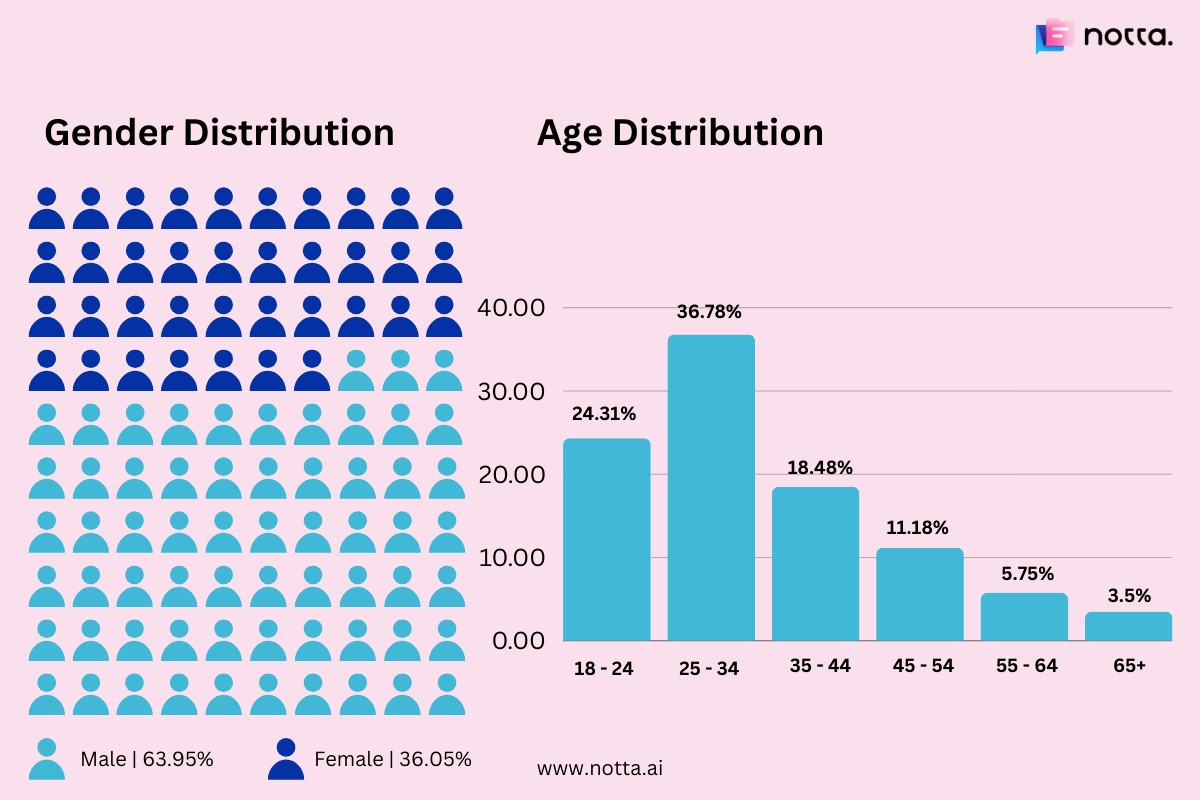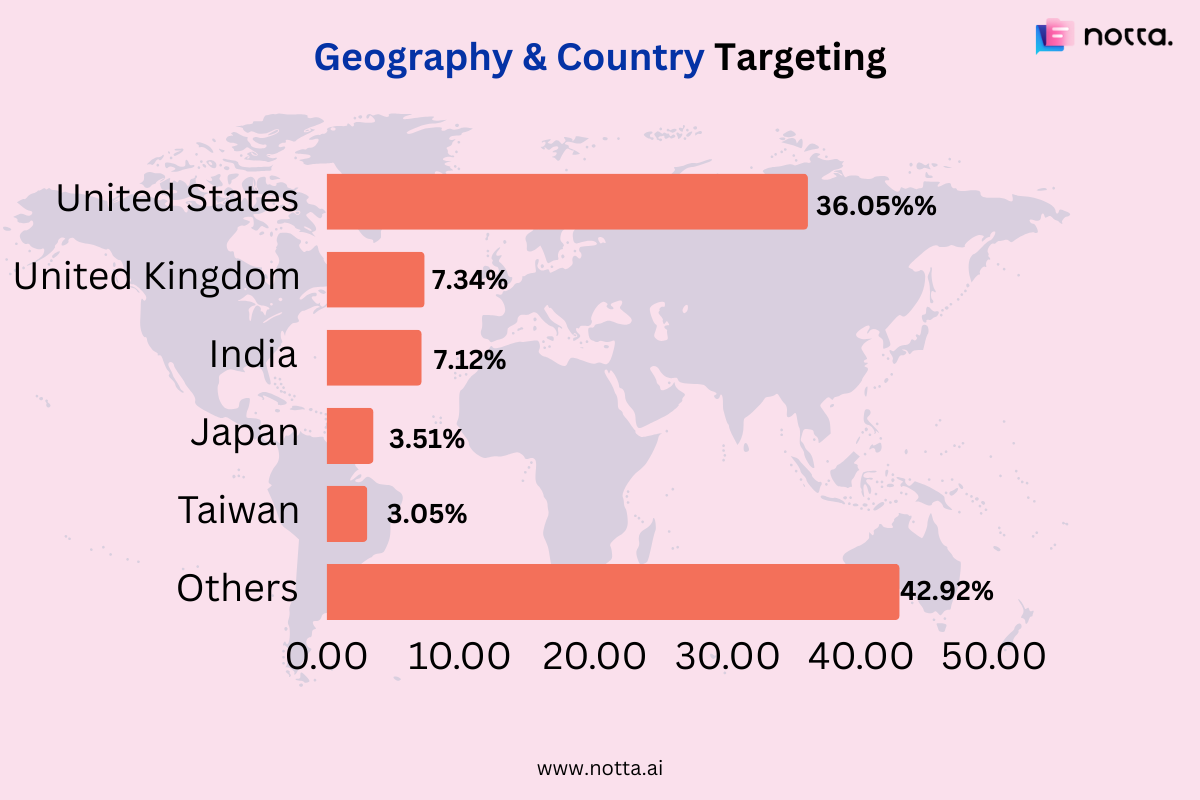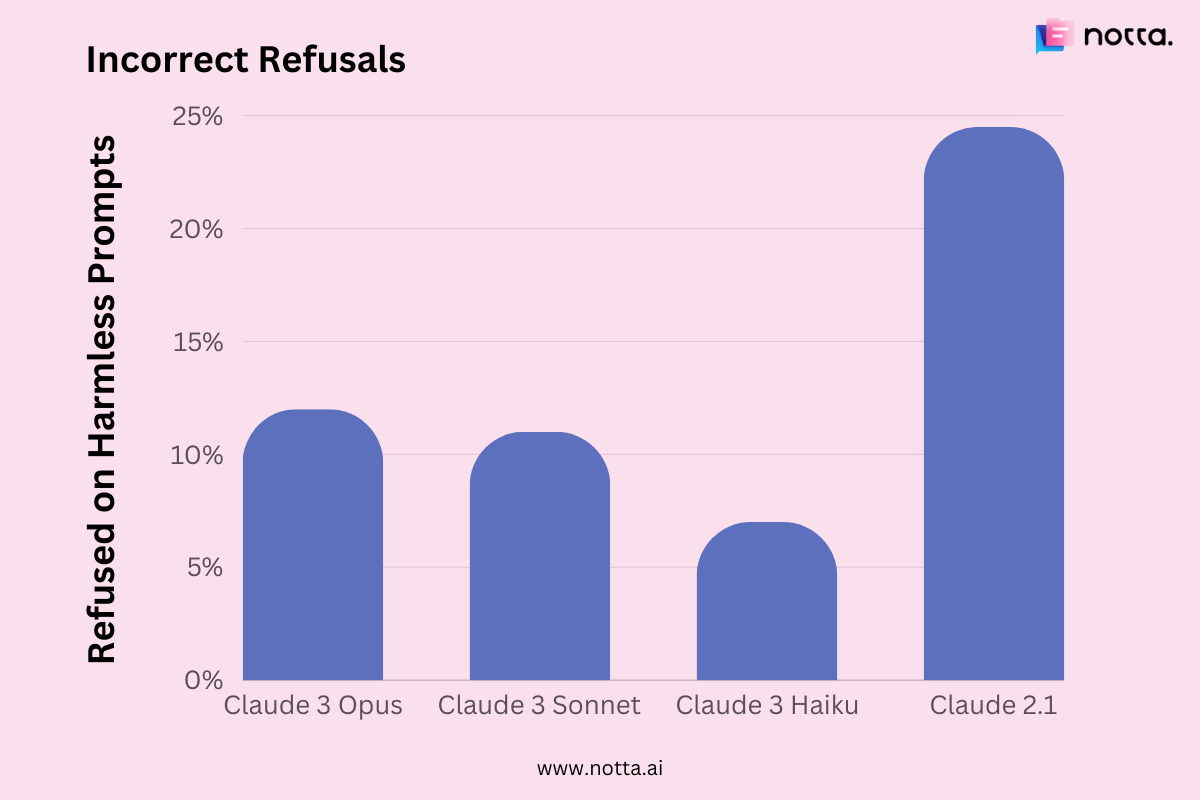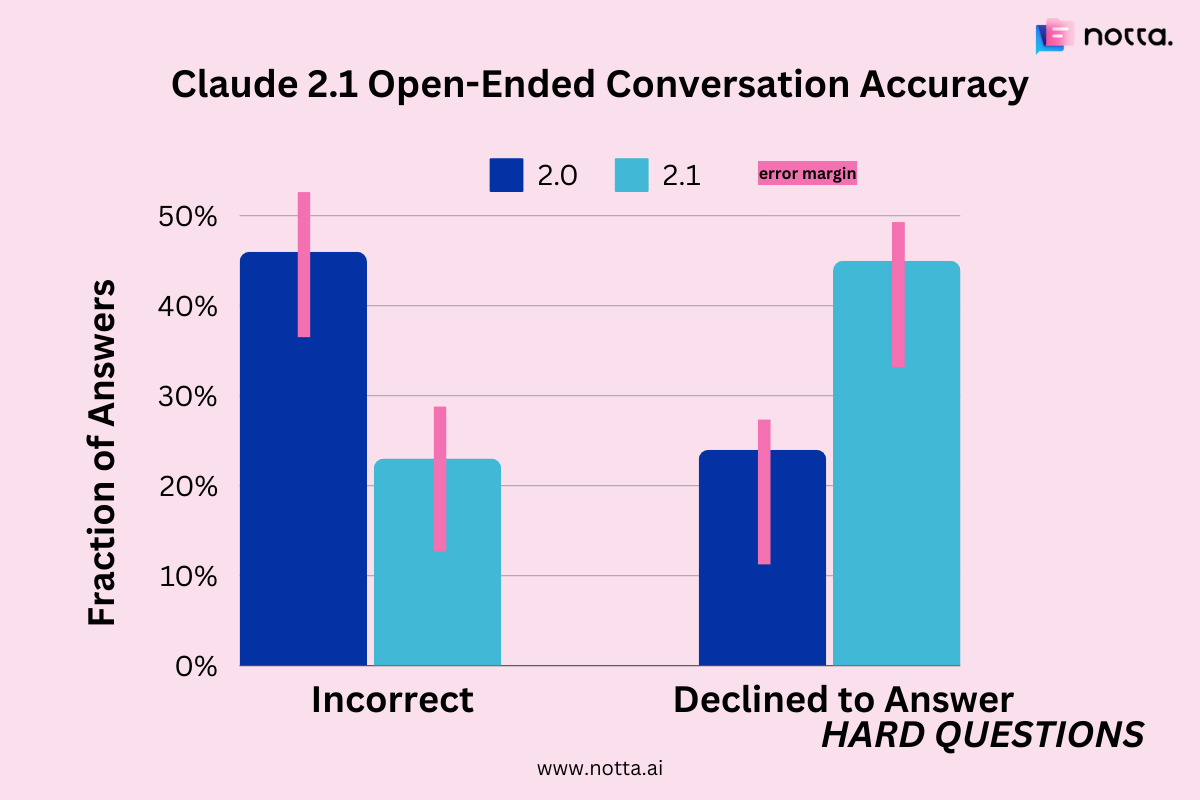
80+ Important Claude Statistics to Know in 2025
Record, transcribe and summarize conversations with one click.
Claude AI has done exceptionally well since its launch in 2023 — and the earlier version (Claude 2) has gained popularity as ChatGPT Killer. It's been a go-to chatbot for many, helping them with a variety of tasks, from creative writing to summarizing text and generating codes.
But Claude is not without its limitations! For example, only Claude Pro subscribers can get priority access to Claude AI during high-traffic periods. If you're like me, who loves to stay up to date with AI advancements and how Claude AI has developed over the years, this article is for you!
I have researched for over a week to gather around 80+ Claude statistics, ranging from its development phase to growth, users, traffic, and more.
Claude statistics top picks
At first glance, Claude AI offers the same basic features as ChatGPT and other AI chatbots. However, there are many differences that make Claude a better choice at certain parameters. For example, Claude 3 Sonnet allows you to interpret images for free — whereas you'll need a paid plan to use the same feature in ChatGPT. If you are short on time, here are my top picks for Claude's statistics:
Anthropic released its first chatbot (Claude and Claude 1) in March 2023, and exactly one year later, Claude 3 was released for public use.
The website sees nearly 54.4 million visitors every month.
Most of the website traffic (44.96%) comes from the social media platform — YouTube.
Over 60% of Claude users are male, between 25 and 34 years old.
The United States has the maximum number of users (36.05%), followed by 7.34% from the United Kingdom and 7.12% from India.
Claude Sonnet and Claude Opus are available in 159 countries, whereas Claude Haiku is yet to be released for public use.
Claude 3 is more accurate and reliable compared to its earlier versions.
Claude development history statistics
If you have tried Anthropic's chatbot — Claude AI, you might have seen that it aims to be helpful, honest, and harmless. The conversation flows naturally with responses that are quite straightforward, making it a good choice for many people.
1. Anthropic released ‘Claude’ and ‘Claude Instant’ on March 14, 2023, with features such as creative and collaborative writing, Q&A, coding, search, and summarization.
2. The initial Claude AI users reported that the AI chatbot is less likely to generate harmful output and is much easier to converse with.
3. More than 350,000 people signed up for the Claude AI waitlist — marking the growth of the chatbot.
4. On April 18, 2023, Anthropic released a new model, Claude 1.3 — which was much safer and less susceptible to adversarial attacks. It also powered the Claude app for Slack and Claude + in the Poe app.
5. On July 13, 2023, Anthropic announced the new model named Claude 2. It was best known for improved performance, writing longer responses, and can be easily accessed via API.
6. Just a few months after Claude 2 was released, Anthropic launched Claude 2.1 to help the chatbot summarize, perform Q&A, forecast trends, and compare multiple documents.
These days, there are so many AI tools and chatbots, which makes the competition so fierce. To stay in the game, Anthropic announced the Claude 3 model family on March 4, 2024. The three state-of-the-art models of Claude 3 include Haiku, Sonnet, and Opus — each with different intelligence, cost, and speed.
Claude AI technical capabilities
In the past month, Anthropic released an upgraded and advanced version of their AI chatbot — Claude 3. You can add documents, upload images, or paste the text to the Claude interface and ask any query. The AI chatbot will scan the content to generate an output that matches your needs. Here are some different Claude statistics revealing the technical capabilities of the chatbot.
Claude AI is trained on data up to August 2023 — which means it will not be aware of the events that happened after this date.
Claude 2.1 has a token limit of 200,000 — which equals roughly 150,000 words or 500 pages.
As per Statista, Anthropic's Claude AI is lauded as one of the most capable LLMs on the market, competing with top AI tools like Google's Gemini and GPT-4.
The maximum output of different Claude AI models is 4096 tokens — with Claude 3 Opus being the most powerful model for complex tasks.
While Claude is free to use, there is a daily message limit. The total number of messages you can send might vary based on demand.
The context window of Claude AI will vary depending on the current demand. While both Claude and ChatGPT are known for summarizing text, you'll want to use Claude AI when working with large documents. This is because Claude 3 can process up to 200,000 tokens (or roughly 150,000 words).
Claude growth statistics
Currently, Claude AI is in an open beta phase, and its usage will be limited to unpaid users. Since its launch, Claude has been called ChatGPT Killer. Despite the small size (just 160 employees) and low profile of Anthropic, it has successfully raised over $1 billion from investors, such as Google and Salesforce. Here are the key Claude statistics related to its growth:
1. The traffic to the Claude AI website has increased by 160.8%.
The global ranking of Claude AI has decreased from 3356 to 1114 over the last three months, marking an incredible growth of the chatbot in the industry. The overall website traffic has increased by 160.8% compared to February 2024. This is primarily because most people want to work faster (and better) with automation.
2. Claude AI works with many languages other than English.
While Claude is trained mostly in English, it also works well with a range of other common languages and can even communicate in less common languages.
Claude AI traffic & reach statistics
AI chatbots like Claude AI are making headlines again — for the right reasons. The recent Claude 3 model family promises to make the chatbot even more capable. I spent time researching Claude AI traffic and reach statistics to analyze the popularity of the tool among the masses.
1. The Claude AI website sees over 54.4 million visitors every month.
The latest available data from SimilarWeb indicates that the Claude AI website generated 54.4 million in March 2024 — with a bounce rate of 38.4%. Each visitor spends more or less 5 minutes on the website and views 3.56 pages per visit.
2. Most of the Claude AI traffic is direct.
Claude AI's top traffic source is direct (83.6%) — with 8.76% of traffic generated from organic search. Here's how the marketing traffic varies by channel:
Direct: 83.6%
Organic Search: 8.76%
Referrals: 5.05%
Mail: 1.41%
Social: 1.14%
Paid Search: 0.03%
Display: 0.01%
3. Claude AI gets around 44.96% of social media traffic from YouTube.
According to the data released by SimilarWeb, YouTube is the primary social media channel that drives traffic to Claude AI.
44.96% of social media traffic comes from YouTube.
13.98% comes from Twitter and 10.03% from LinkedIn.
Facebook generates around 9.82% of total social media traffic, whereas WhatsApp generates 7.6%.
13.61% of the total social media traffic comes from other platforms.
4. More than 50% of visitors use mobile phones to access Claude AI.
According to the data released by Semrush, around 53.68% of website traffic comes from mobile devices, and the remaining 46.32% is from desktops.
Claude AI user statistics
When OpenAI released ChatGPT in 2022, it soon became the fastest-growing app ever — revealed by ChatGPT statistics. Recently, another LLM (Anthropic's Claude 3) has begun challenging ChatGPT for that title. I've used ChatGPT since its release in 2022 and have tested the Claude capabilities in these months.
The competition between ChatGPT and Claude is getting fierce — especially after the release of Claude 3 models. Claude can be a pretty good brainstorming or coding partner. It's like a personal assistant who can help you write or summarize text or PDFs. You can discuss ideas and even ask Claude to generate some creative writing for you.
1. More than 60% of Claude AI's website users are male.
The SimilarWeb report reveals that Claude AI has around 63.95% male and 36.05% female — with the largest age group of visitors being 25-34 years old.
18 - 24 years: 24.31%
25 - 34 years: 36.78%
35 - 44 years: 18.48%
45 - 54 years: 11.18%
55 - 64 years: 5.75%
65 + years: 3.5%

2. 36.05% of Claude AI's traffic comes from the United States.
According to SimilarWeb, the major traffic on the Claude AI website comes from the United States, followed by the United Kingdom and other countries. Here's what the Claude statistics reveal:
36.05% of traffic comes from the United States.
Visitors from the United Kingdom generate 7.34% of traffic.
7.12% of traffic comes from India, followed by 3.51% from Japan and 3.05% from Taiwan.
Around 42.92% of web traffic comes from other countries.

Claude AI performance statistics
When ChatGPT came out, I started where most others did: generating poems and asking random questions. But its output felt generic and sometimes flowery. While clever prompting can avoid this, the competitor Claude AI tends to sound more human. While testing, I also found Claude to be more reliable and trustworthy due to its ability to hallucinate less. To help you understand better, here are the performance statistics of different Claude versions.
#1 Claude 2 performance statistics
Anthropic's safe and honest chatbot, Claude 2, has an impressive memory. It can remember up to 150,000 words in each conversation. This makes Claude 2 useful for having a long and step-by-step discussion of any problem. You can even upload a PDF and ask relevant questions to generate helpful output.
Here, I'll reveal some of the performance statistics related to Claude 2:
1. When Claude 1.3 and Claude 2 were compared, the latest model scored 76.5% in the Bar Exam, whereas Claude 1.3 scored 73%. This clearly explains that Claude 2 has a longer memory and is less likely to produce harmful outputs.
2. Claude 2 has great coding skills compared to its earlier version. For example, Claude 2 passed the Codex HumanEval (Python coding test) with 71.2%, which is up from 56%, as scored by Claude 1.3.
3. Claude 2 also achieved 88% on the GSM8K benchmark, compared to 85.2% for the earlier version. This shows how well Claude deals with grade-school maths problems.
4. When Claude 2 was compared with the college students applying to graduate school, Anthropic's AI chatbot scored more than the 90th percentile on the GRE reading and writing exams.
It won't be wrong if I say Claude AI acts as a personal assistant or friendly colleague who can help you with many tasks. What's impressive about Claude 2 is the context window length, which helps the chatbot remember past questions, what topic you're talking about, and how it answered.
#2 Claude 2.1 performance statistics
Since the launch of Claude, millions of people have used the chatbot for a wide range of applications, from translating academic papers to analyzing complex contracts and more.
The great response from the users resulted in the development of Claude 2.1. The main difference between Claude 2 and Claude 2.1 is the increased token limit of 200,000 (or 150,000 words).
Here, I've gathered some of the important Claude 2.1 statistics that reveal the popularity and features of the AI chatbot.
1. 2x reduction in false statements by Claude 2.1.
Claude 2.1, the new version of Claude 2, hallucinates less. It has made quite an incredible gain in honesty, marking a 2x reduction in false statements compared to the earlier Claude 2 model.

2. Claude 2.1 is more accurate than Claude 2.
The new model works well when comprehending and summarizing long and complex documents that demand high accuracy. As per the Anthropic's evaluation, Claude 2.1 also has a 3-4x lower rate of mistakenly concluding a particular document supporting a particular claim.
#3 Claude 3 performance statistics
With the release of the Claude 3 model family, Anthropic is setting new industry standards in the AI industry. The Claude 3 combines three state-of-the-art models: Claude 3 Haiku, Claude 3 Sonnet, and Claude 3 Opus. Both Sonnet and Opus are available in 159 countries, whereas Haiku will be available soon.
1. Claude 3 Sonnet is 2x faster than earlier versions.
Claude 3 Sonnet is two times faster and more intelligent than Claude 2 and Claude 2.1 (earlier versions of Claude). It's a pretty good choice for tasks that demand rapid responses, such as sales automation and knowledge retrieval.
2. Claude 3 scored more marks in tests compared to its competitors.
Anthropic tested Claude 3, Gemini, GPT-3.5, and GPT-4 together and evaluated results based on graduate-level expert reasoning (GPQA), undergraduate-level expert knowledge (MMLU), basic mathematics (GSM8K), and more.
Here are the Claude statistics that reveal the performance of the latest and advanced Claude models:
Claude 3 Opus scored more than ChatGPT-4 when tested against undergraduate-level knowledge, graduate-level reasoning, grade school math, math problem solving, multilingual math, and more.
If you have used Claude's earlier version, you might have noticed how often the chatbot refuses to generate an output. Anthropic worked to create Claude 3 better and offer fewer refusals. For example, Claude 2.1 has a refusal rate of around 25%, whereas it is less than 10% for Claude 3 Haiku.

Note: The free Claude plan is limited to more or less 25 messages per day — though you can unlock more by purchasing the Claude Pro plan, which starts at $20 per month.
Claude statistics FAQs
Is Claude better than ChatGPT?
Claude AI and ChatGPT are powered by similarly powerful large language models (LLMs) — though they differ in some ways. For example, ChatGPT is more versatile, with features like internet access and image generation available in the advanced version, while Claude AI provides cheaper API access and a large context window.
Can Claude AI do data analysis?
Yes, Claude AI is a powerful tool that works well for data analysis. It can process large datasets, identify valuable insights, and then communicate those findings.
How many parameters are in Claude?
Claude models are trained over 137 billion text and parameters. The more parameters an AI model has, the more data it can handle.
What is Claude used for?
Claude is an AI chatbot powered by Anthropic's LLM and can generate text content or engage in conversation with users. The large context window of Claude 3 makes it better for summaries and analysis of large documents.
Conclusion
Claude AI is a powerful LLM that's well-suited for tasks such as brainstorming, data crunching, and text analysis. If you are looking for an AI chatbot that can be used as a partner for creative projects — brainstorming, proofreading, writing, and editing — Claude AI is your best bet. Your output will be more natural and less generic than other AI chatbots. The 80+ Claude statistics reveal how the AI chatbot has developed since its launch and its user base. If you want to try the tool yourself, you may consider creating a free Claude account!
References
Anthropic: Introducing Claude \ Anthropic
Anthropic: Claude 2 \ Anthropic
Anthropic: Introducing Claude 2.1 \ Anthropic
Anthropic: Introducing the next generation of Claude \ Anthropic
Anthropic Help Center: How up-to-date is Claude's training data? | Anthropic Help Center
Statista: Aggregate AI startup acquisition by major tech companies in 2023.
Anthropic Help Center: Does Claude.ai have any message limits? | Anthropic Help Center
Anthropic: How do I increase my usage limits? | Anthropic Help Center
The New York Times: Anthropic’s Claude Is Competing With ChatGPT. Even Its Builders Fear AI. - The New York Times
Similarweb: claude.ai Traffic Analytics, Ranking & Audience [March 2024] | Similarweb
Anthropic Help Center: Can I use Claude in different languages? | Anthropic Help Center
Semrush: claude.ai Website Traffic, Ranking, Analytics [March 2024] | Semrush